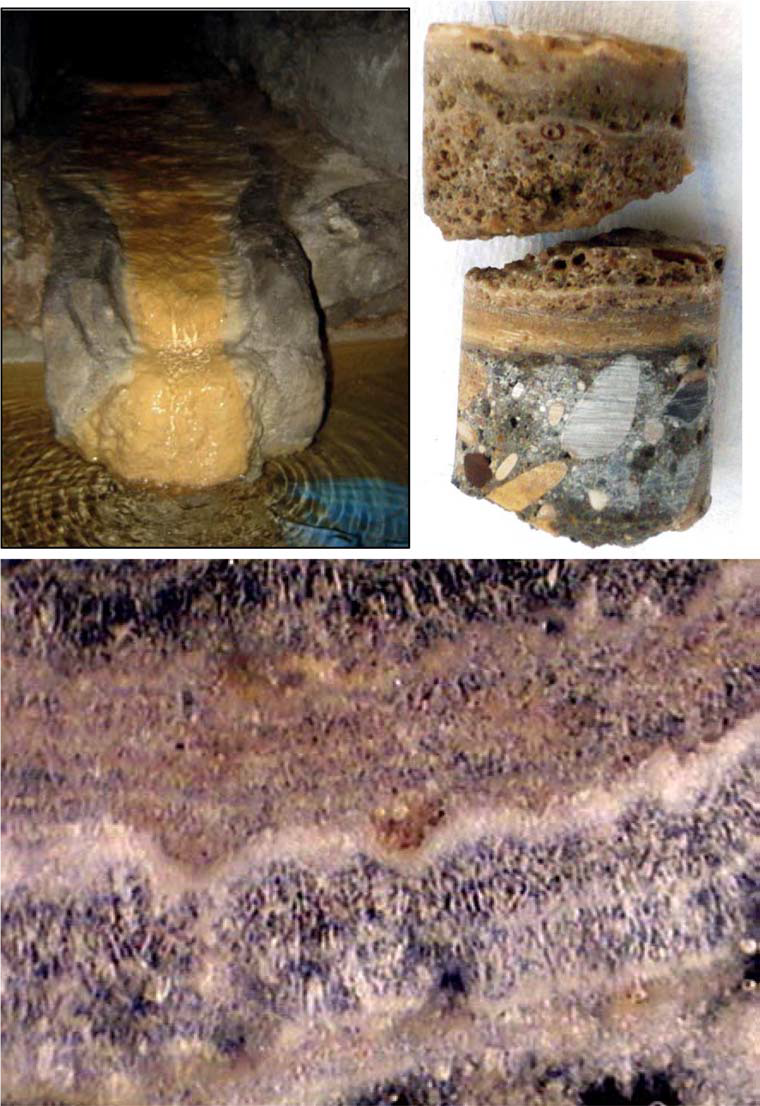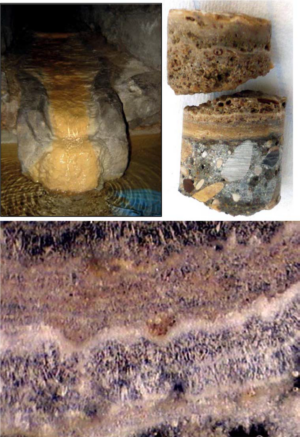Les dépôts de carbonate secondaire (similaires aux spéléothèmes) dans les sous-sols urbains ont été récemment mis en évidence comme étant des archives puissantes pour la reconstruction de l’empreinte historique anthropogénique sur l’environnement. La chronologie précise de ces dépôts carbonatés secondaires est une question clé pour la reconstruction temporelle précise des conditions environnementales. Nous présentons trois ensembles de données 14C pour des dépôts urbains de type spéléothèmes qui se sont développés dans des environnements anthropiques contrastés. Le premier a été échantillonné dans une galerie technique souterraine du château de Versailles (France), et les deux autres dans un trou d’homme (source Saint-Martin) d’un aqueduc souterrain historique à Paris (France). La comparaison de ces enregistrements avec le pic de la bombe et la chronologie relative (comptage des lamines) nous a permis d’identifier : i) un transfert rapide de carbone de l’atmosphère vers le sous-sol urbain ; ii) une forte proportion de carbone mort et un effet d’amortissement important en relation avec un éventuel carbone ancien stocké dans les sols urbains et/ou l’influence de la combustion locale de carbone fossile. Cette étude montre également que la stratification de ces dépôts est bi-annuelle dans ces sites fortement urbanisés.
Références : Pons-Branchu E., Bergonzini L., Tisnérat-Laborde N., Branchu P., Dumont E., Massault M., Bultez G., Malnar D., Kaltnecker E., Dumoulin JP., Noret A., Pelletier N., Roy-Barman M., 2018. 14C in urban secondary carbonate deposits: a new tool for environmental studies . Radiocarbon 60, 1269.1281. Doi:10.1017/RDC.2018.25
Projet : Aqueducs et Fontaines (Fondation des sciences du patrimoine)



